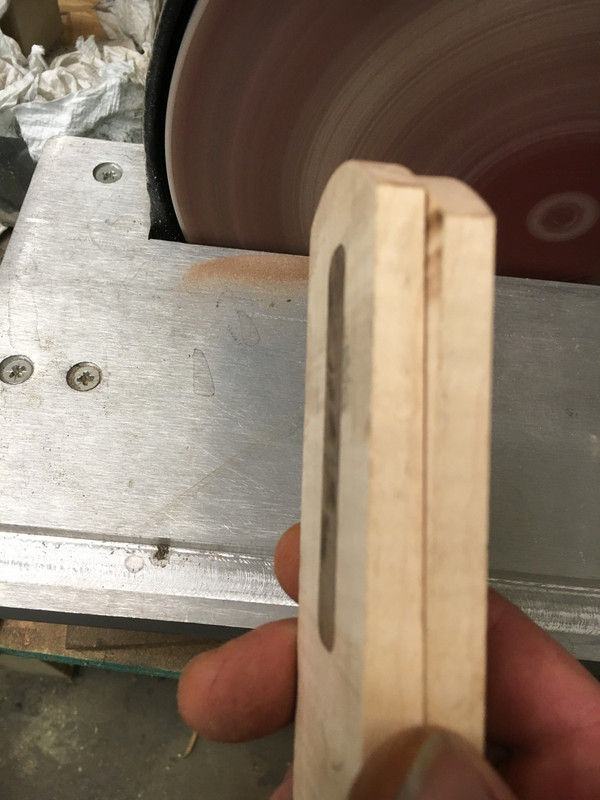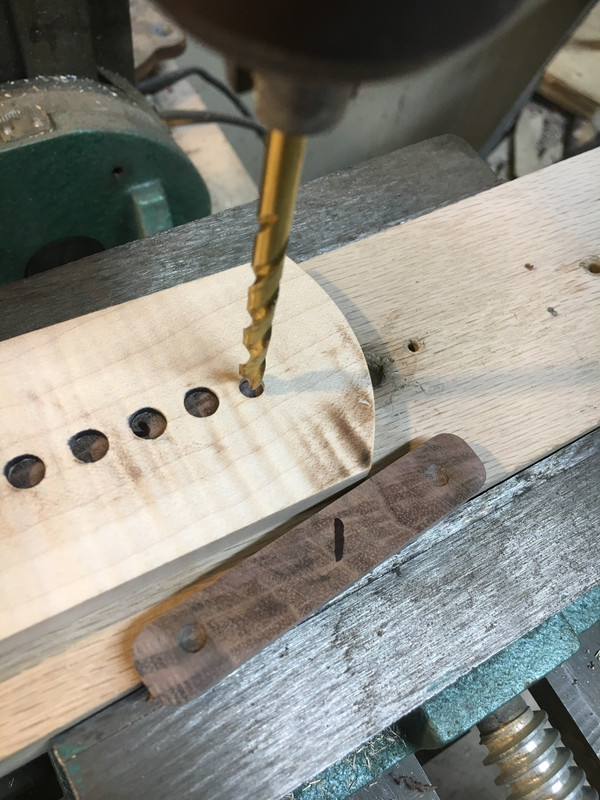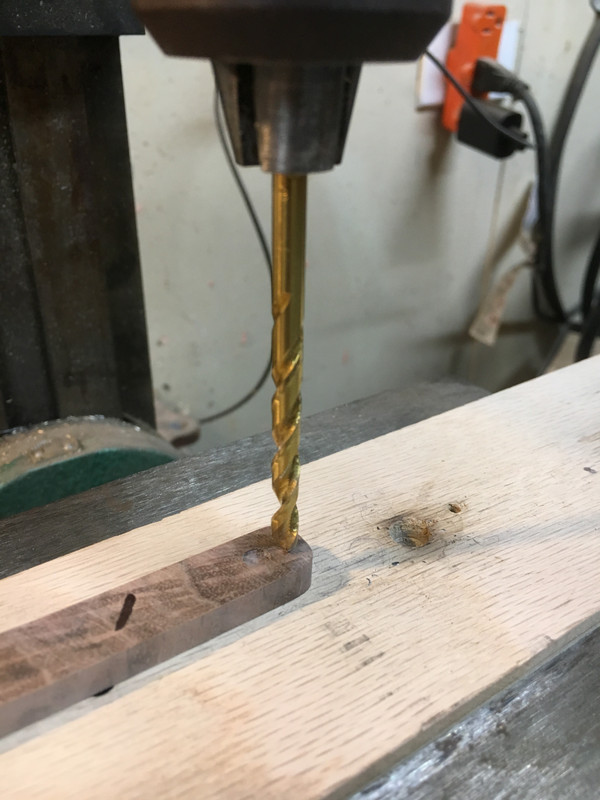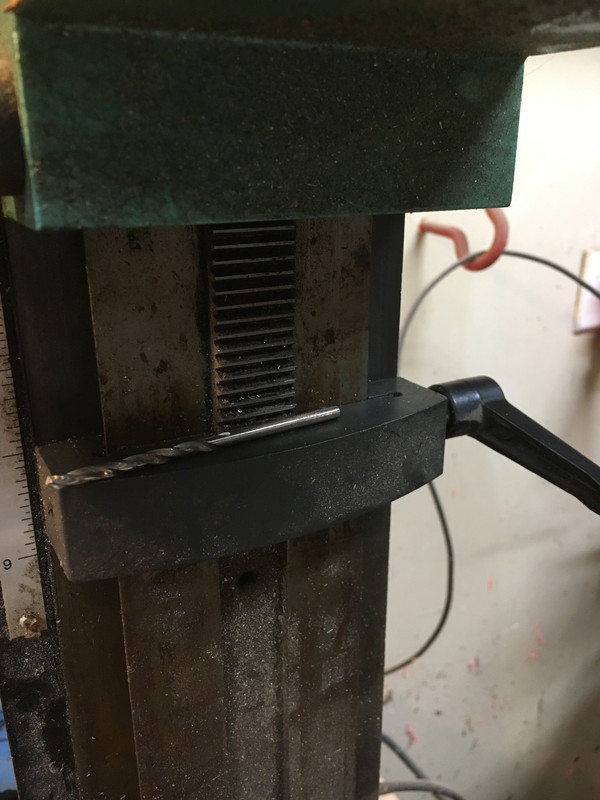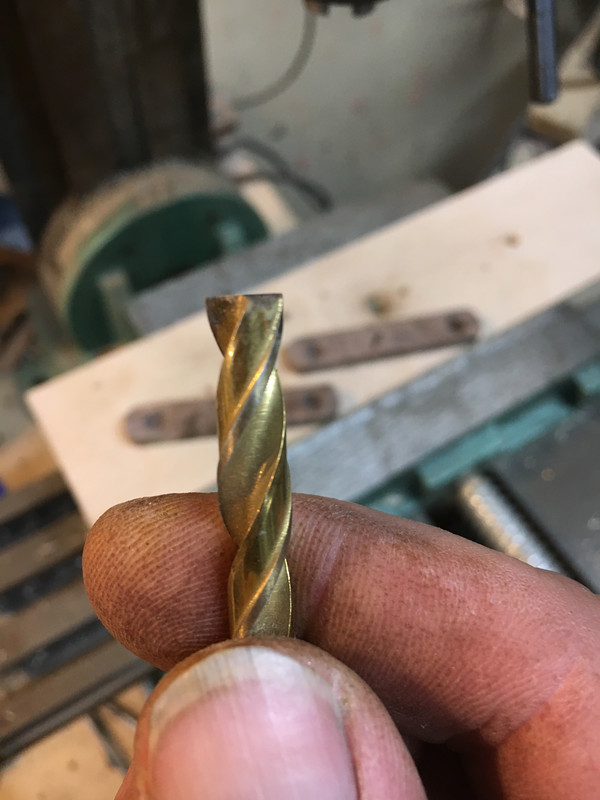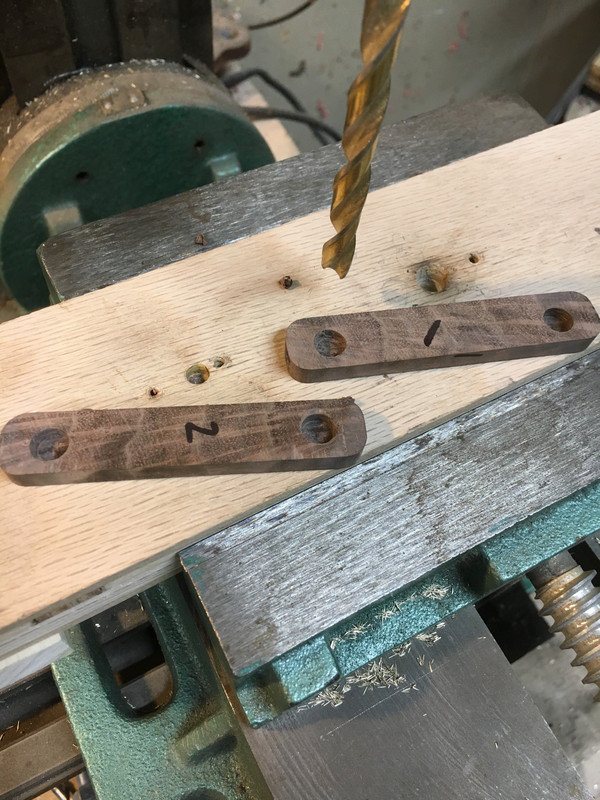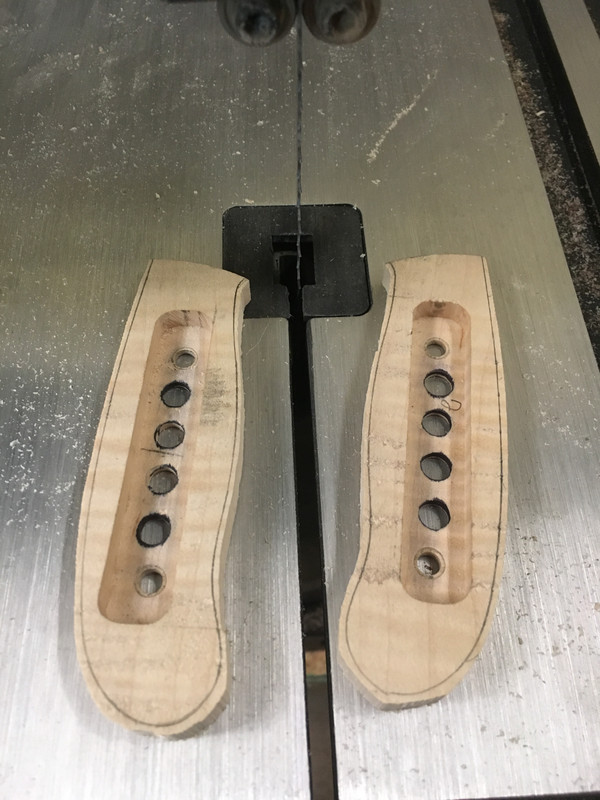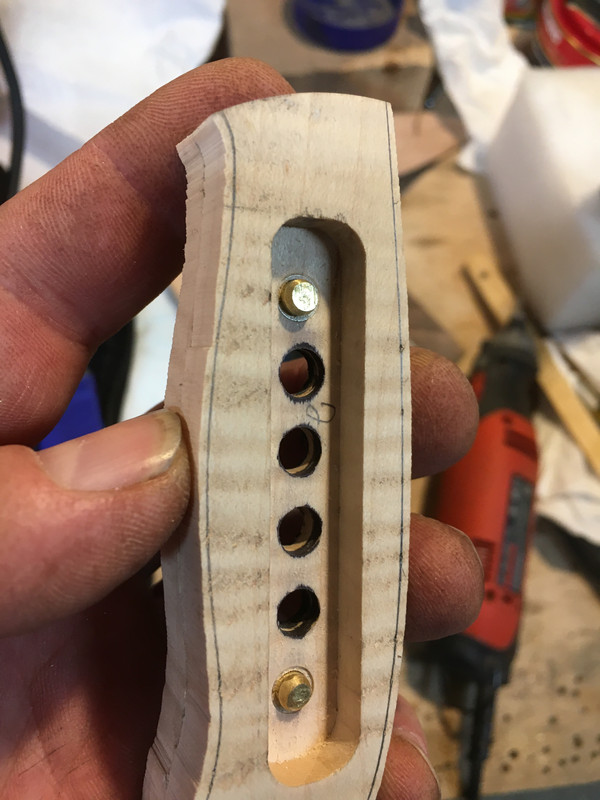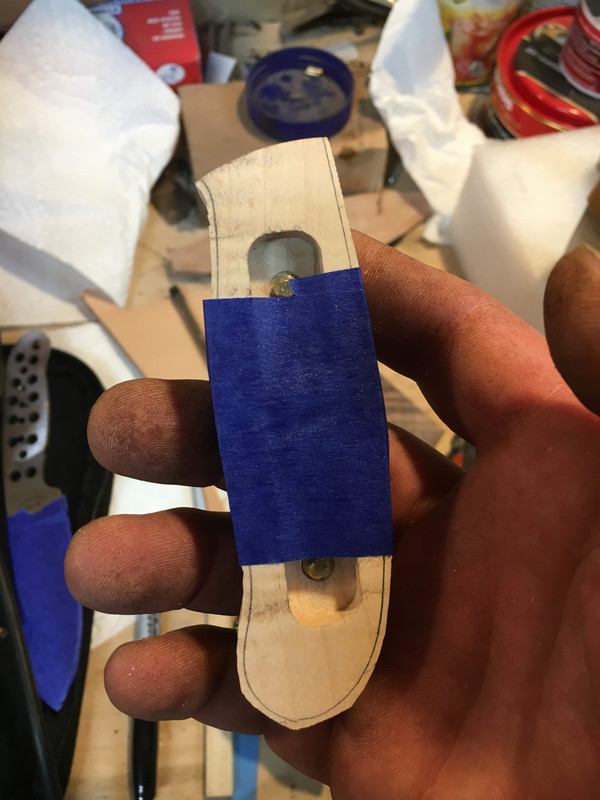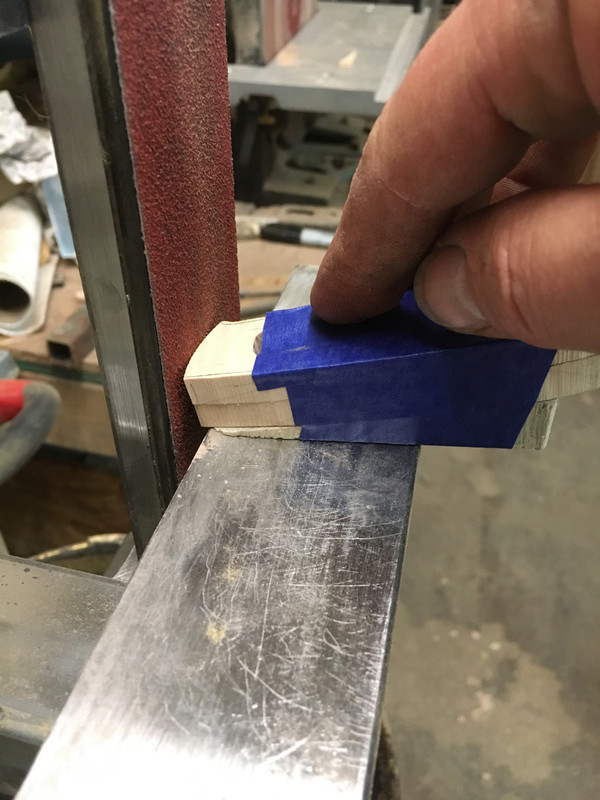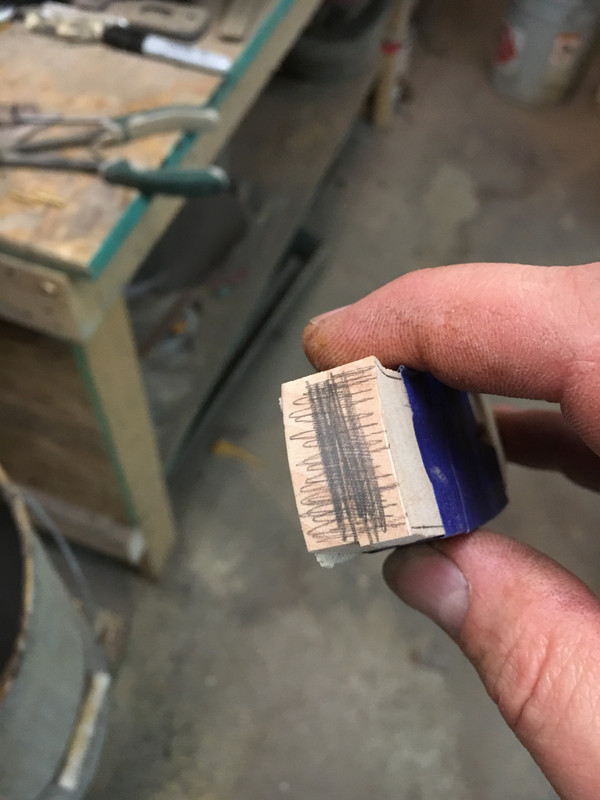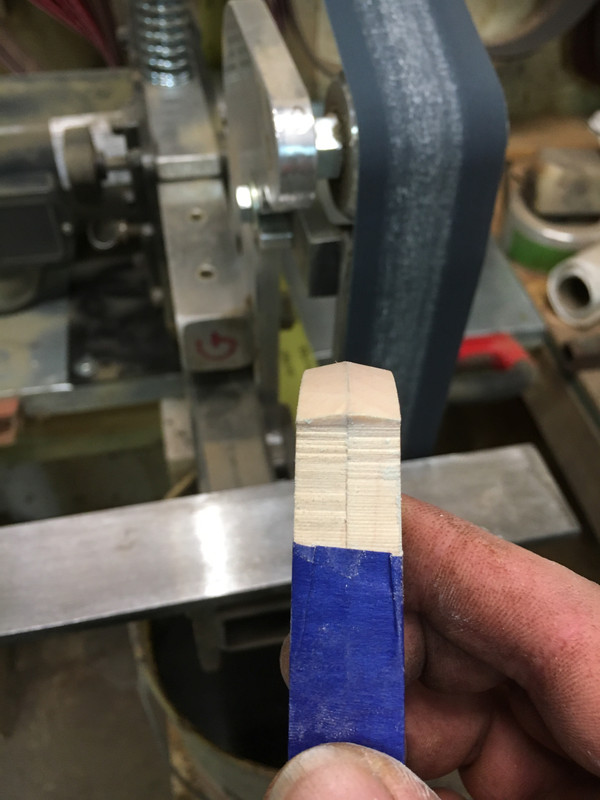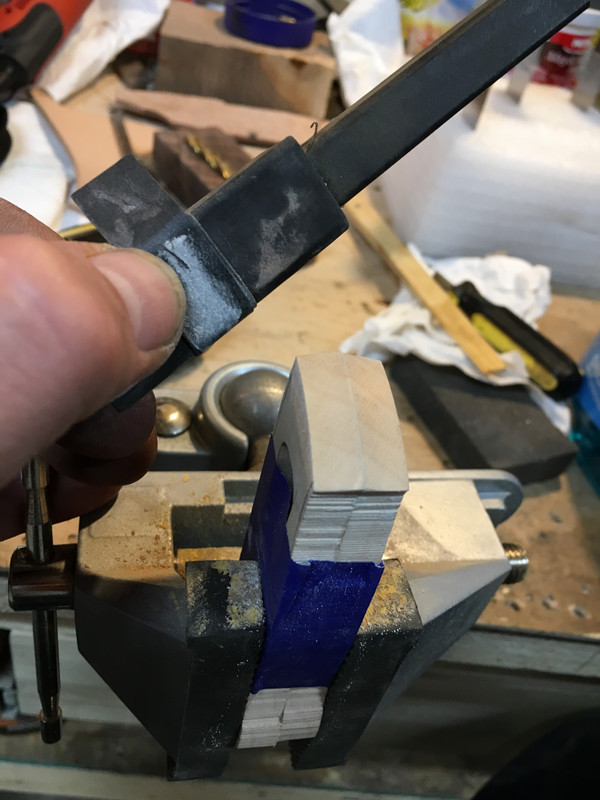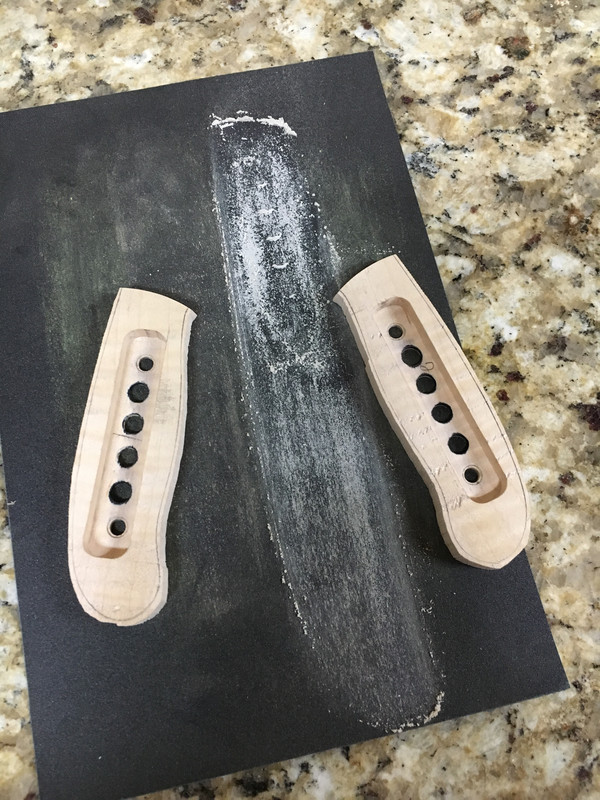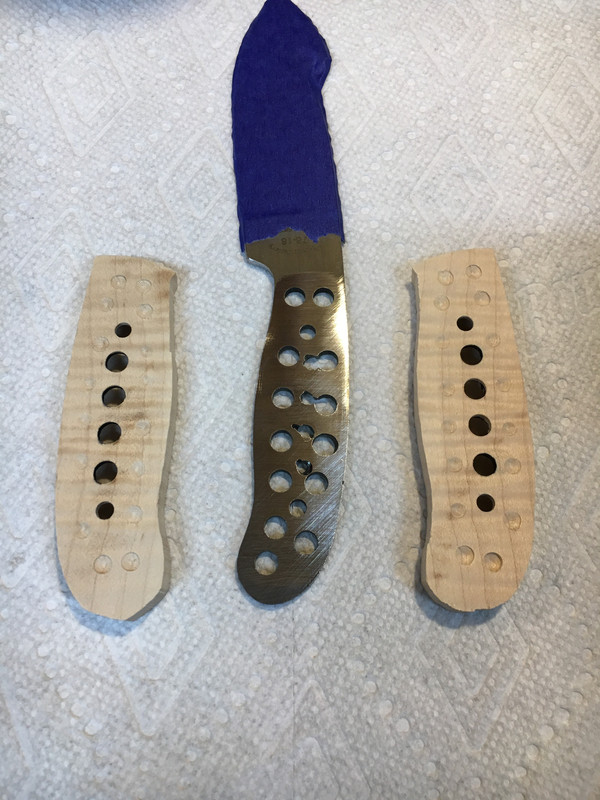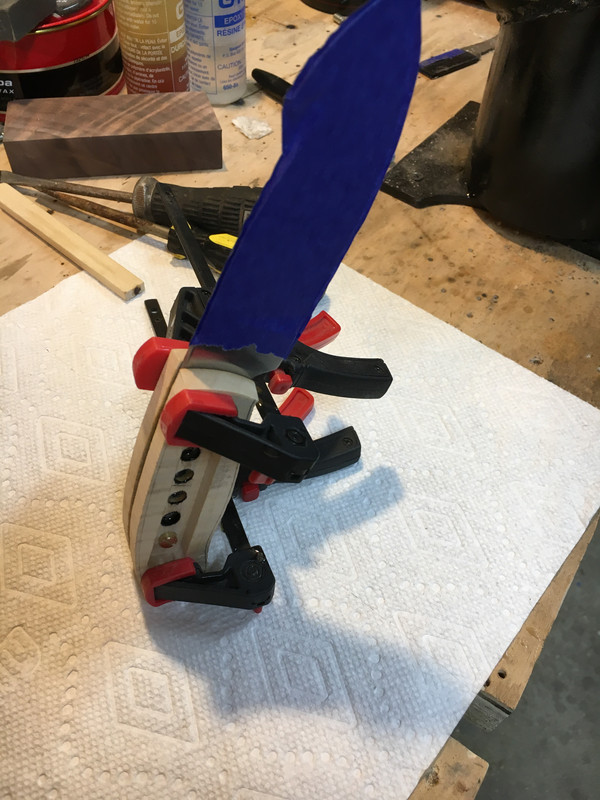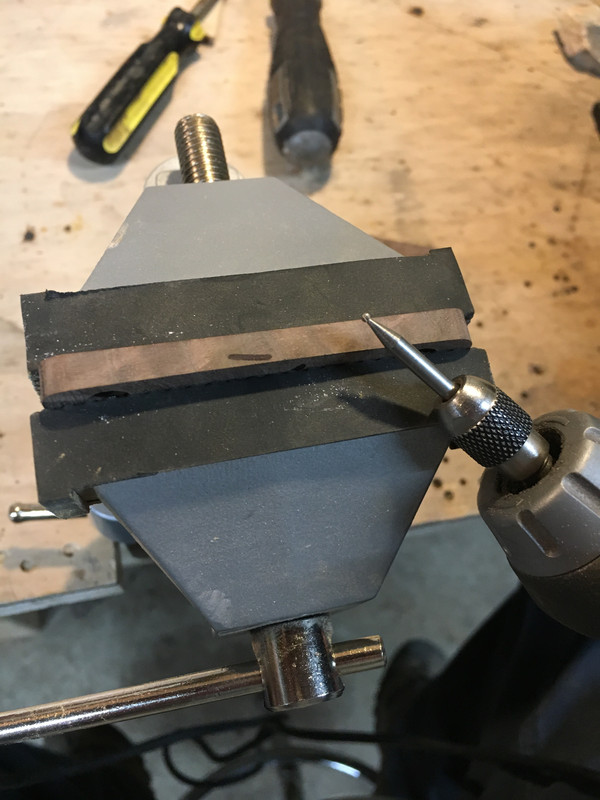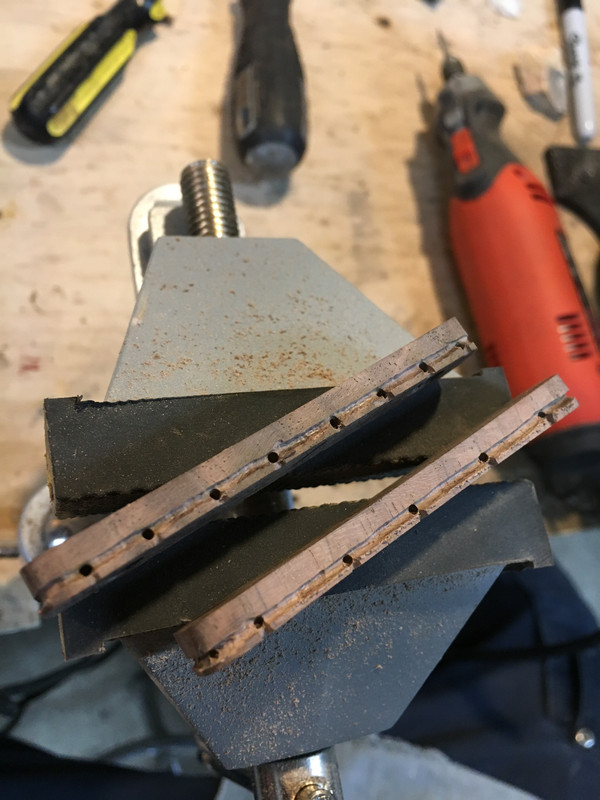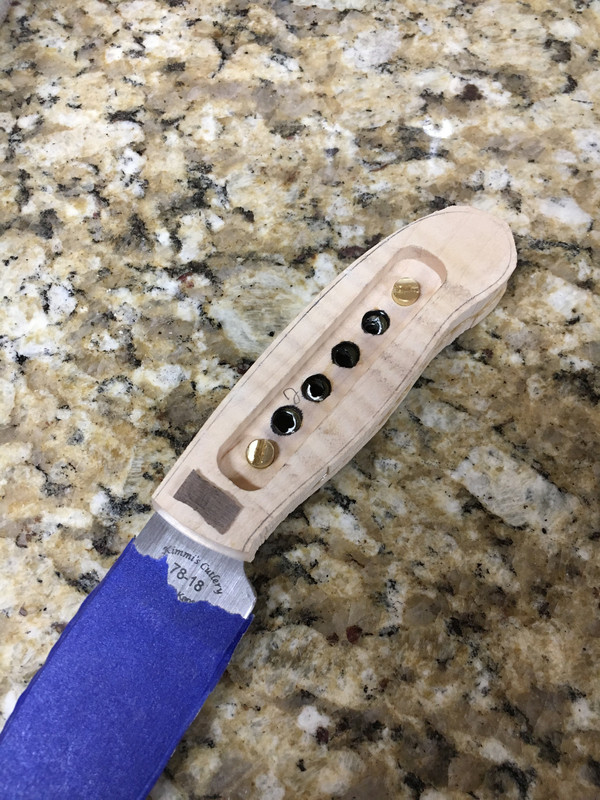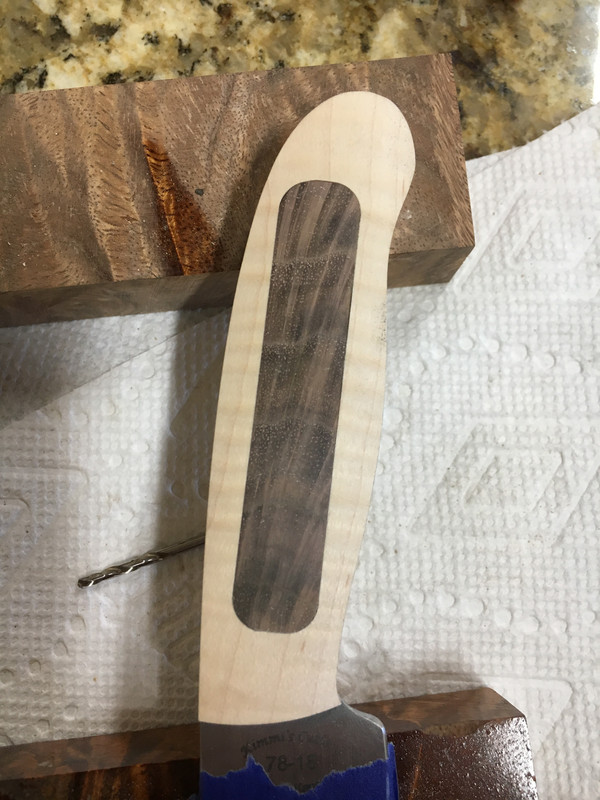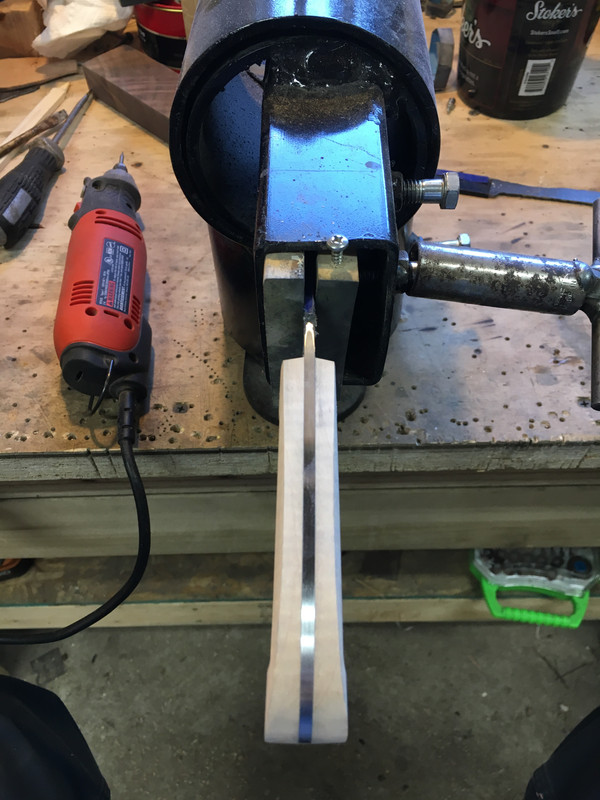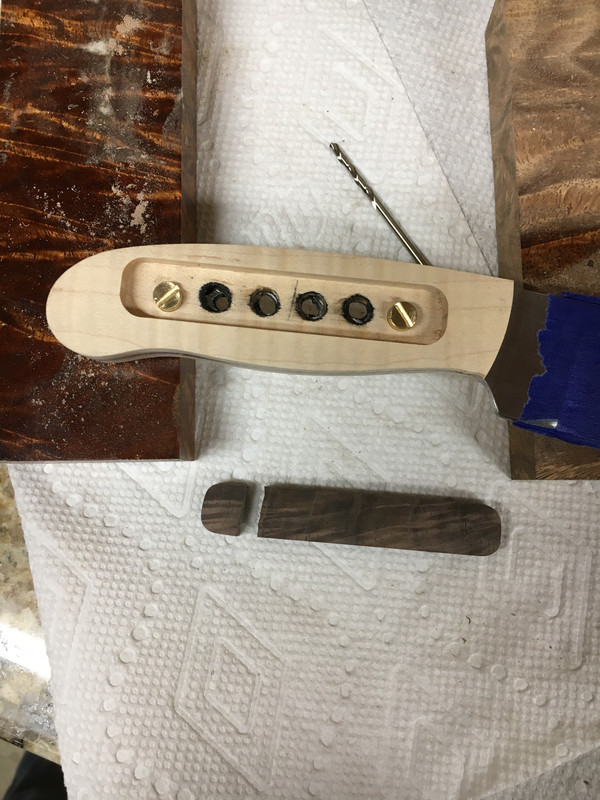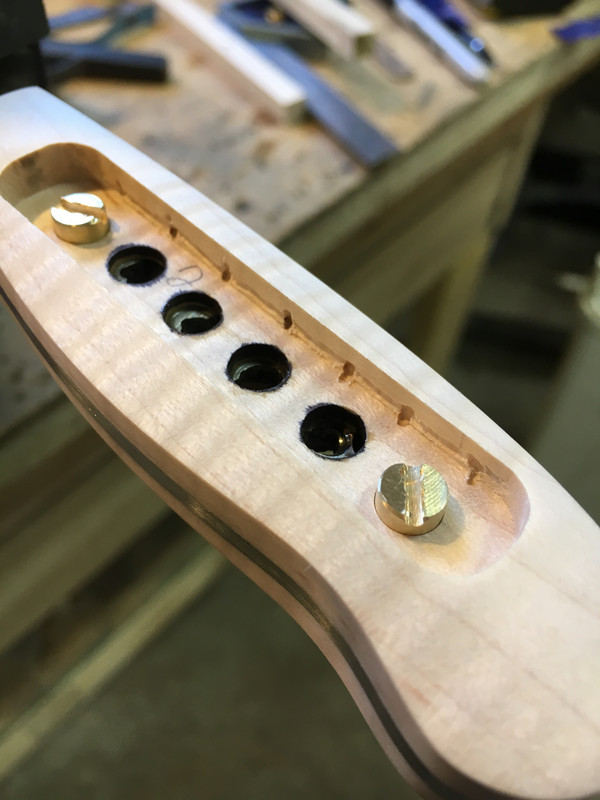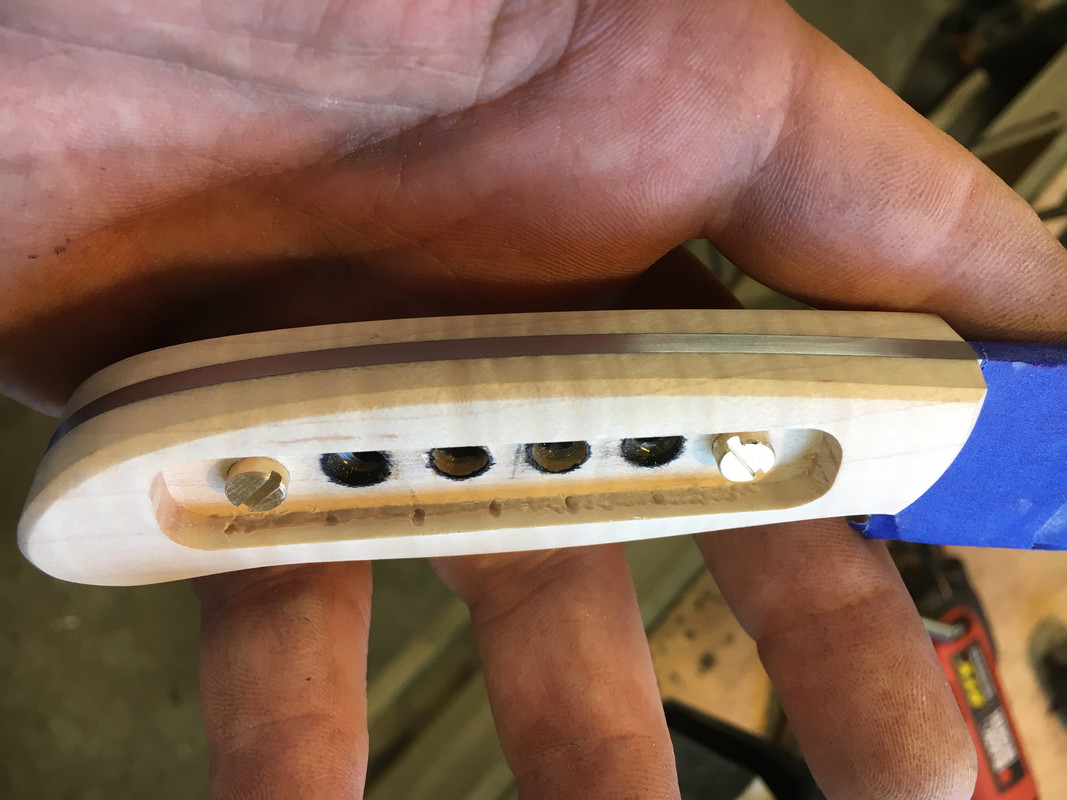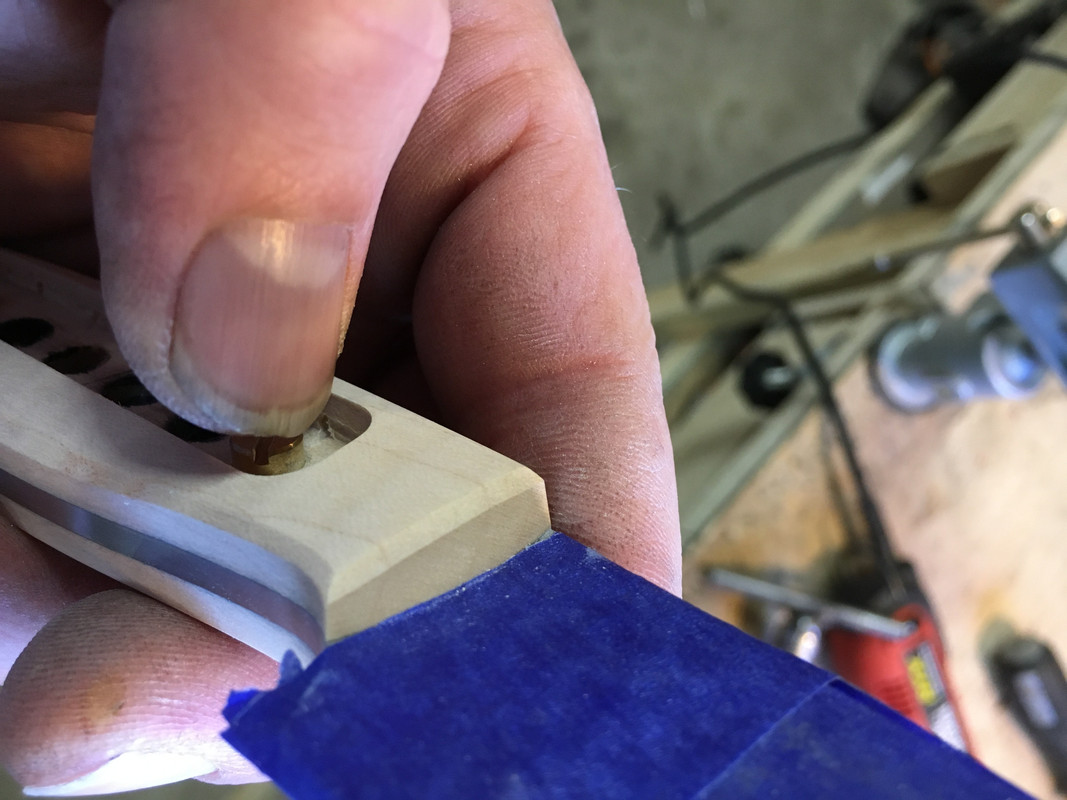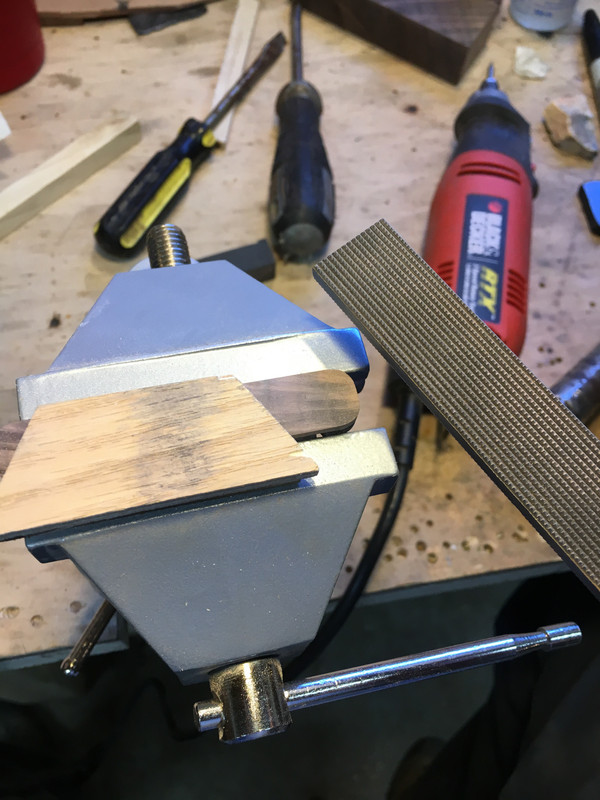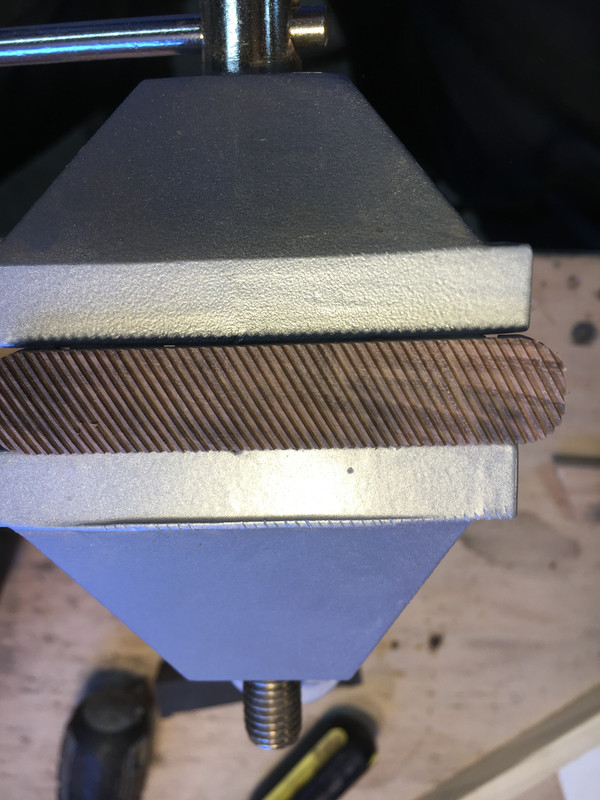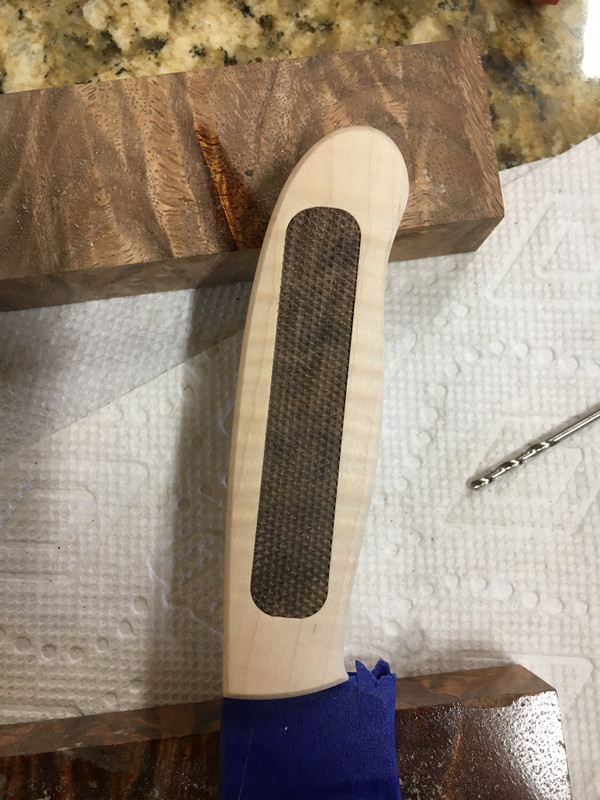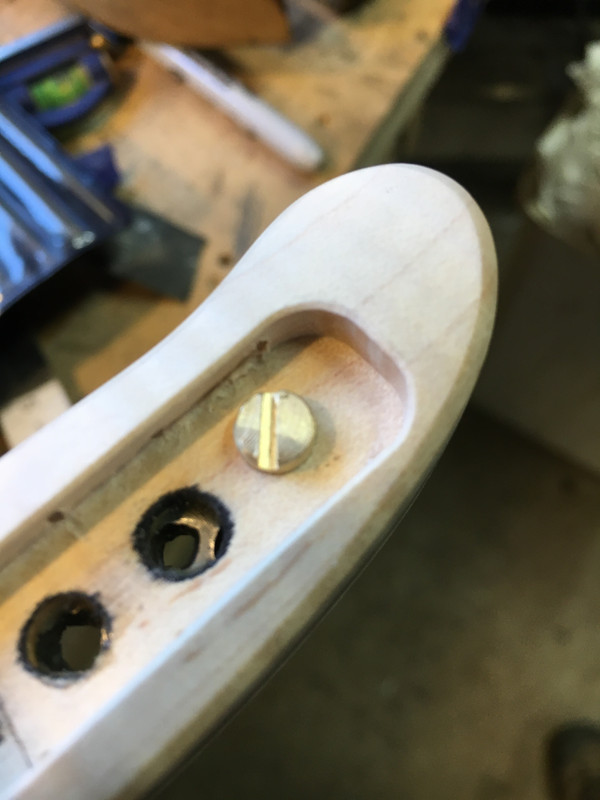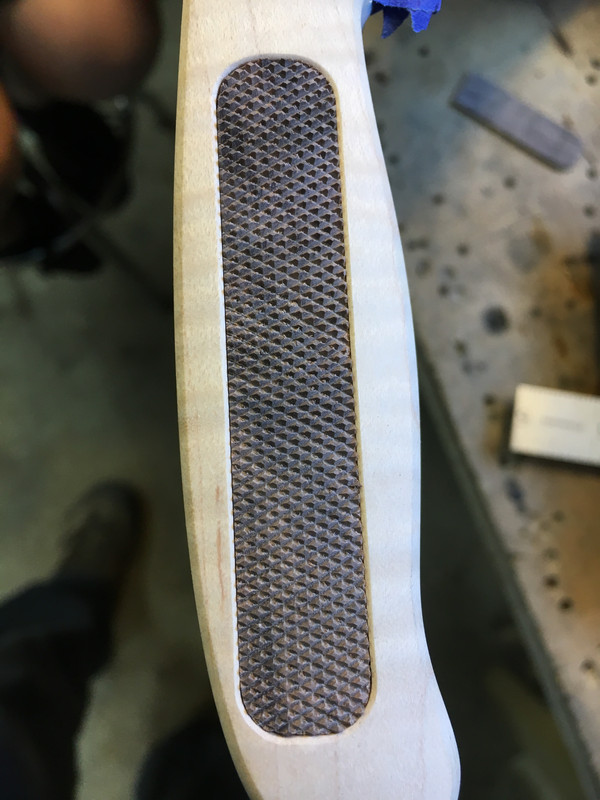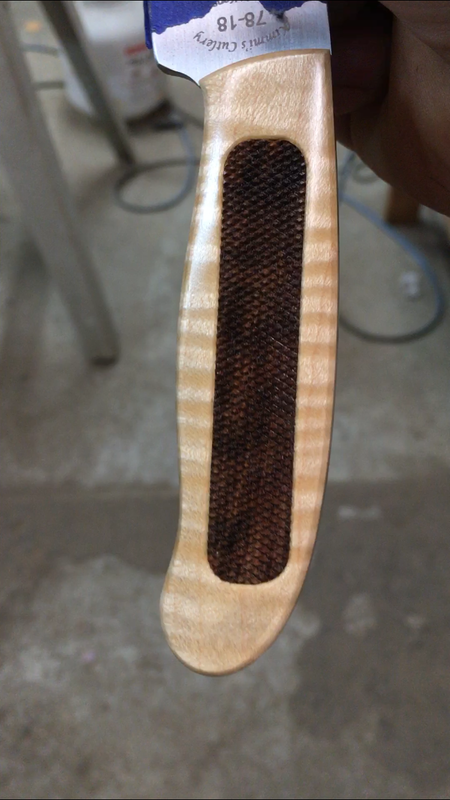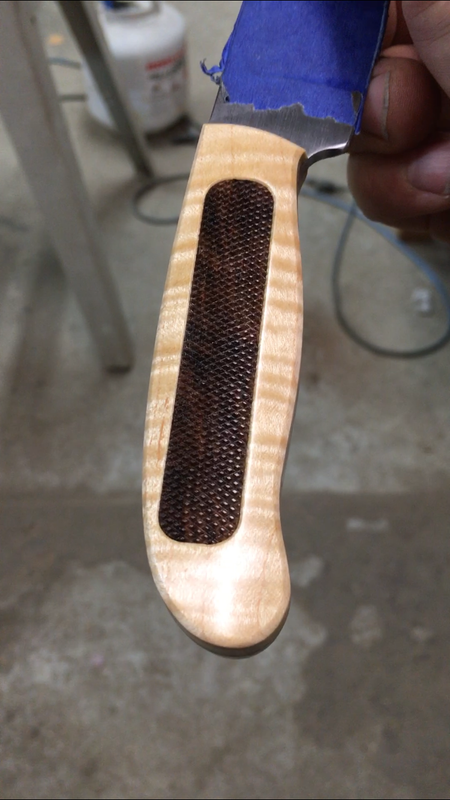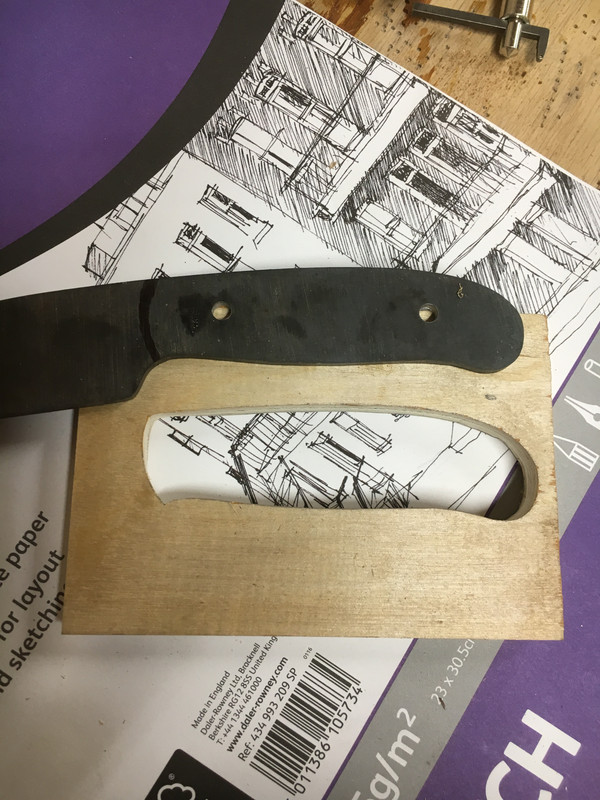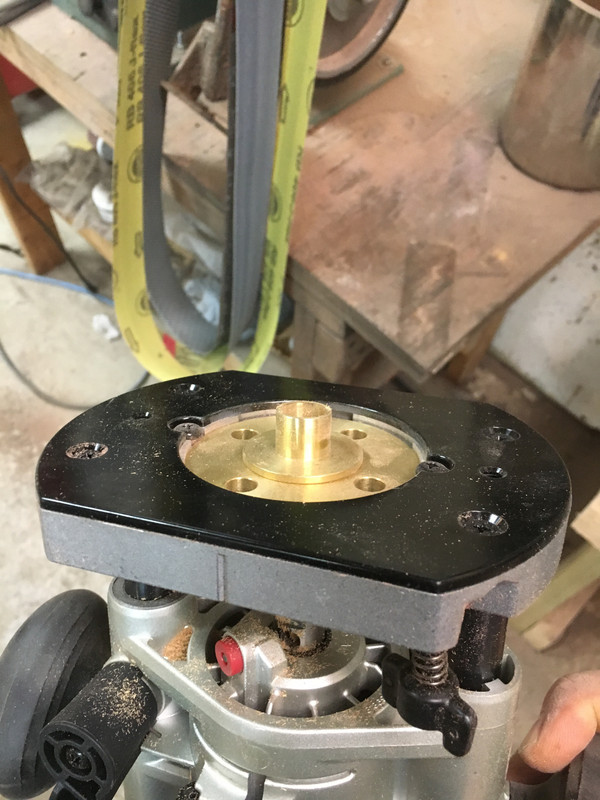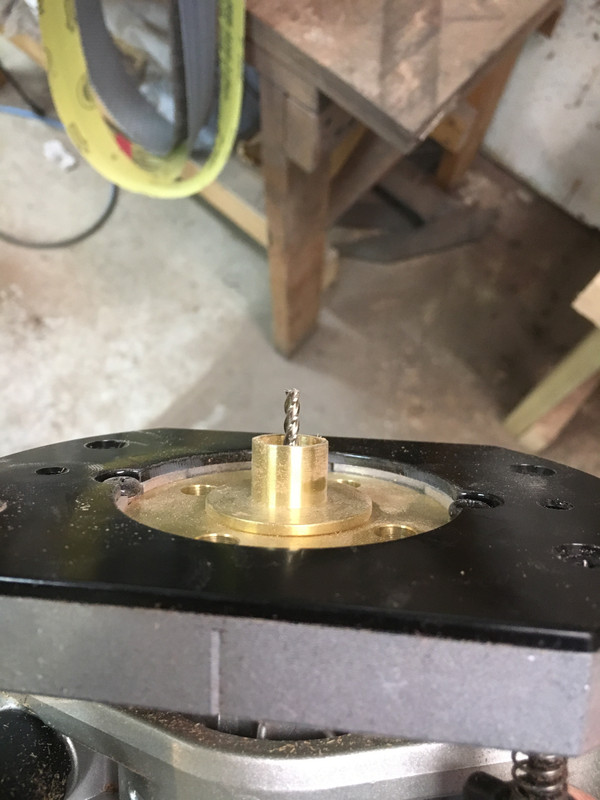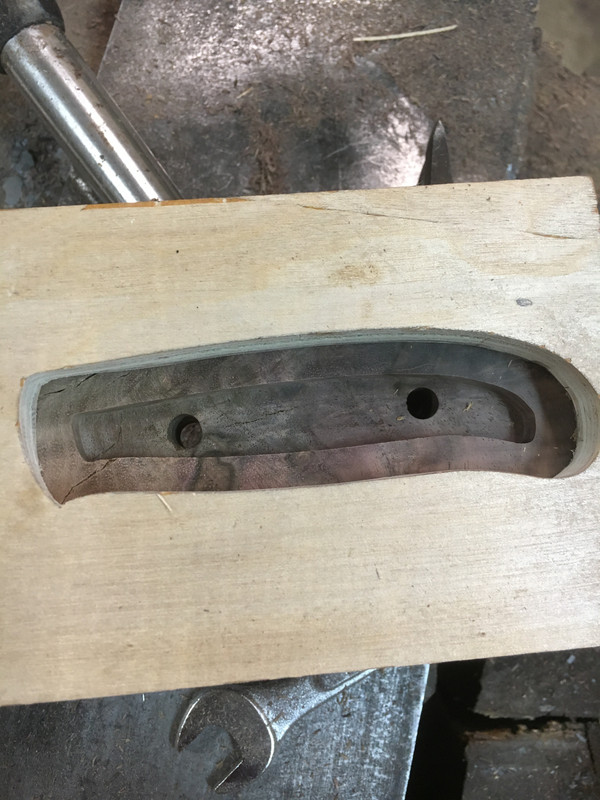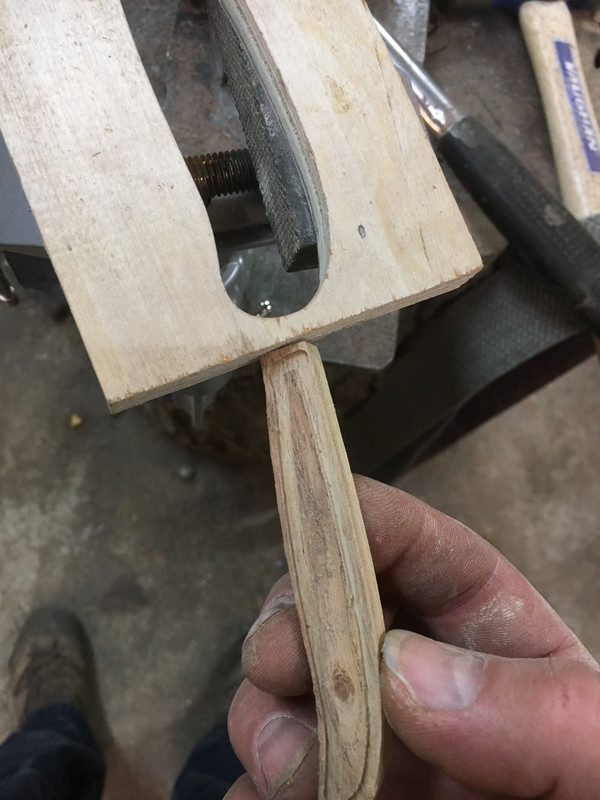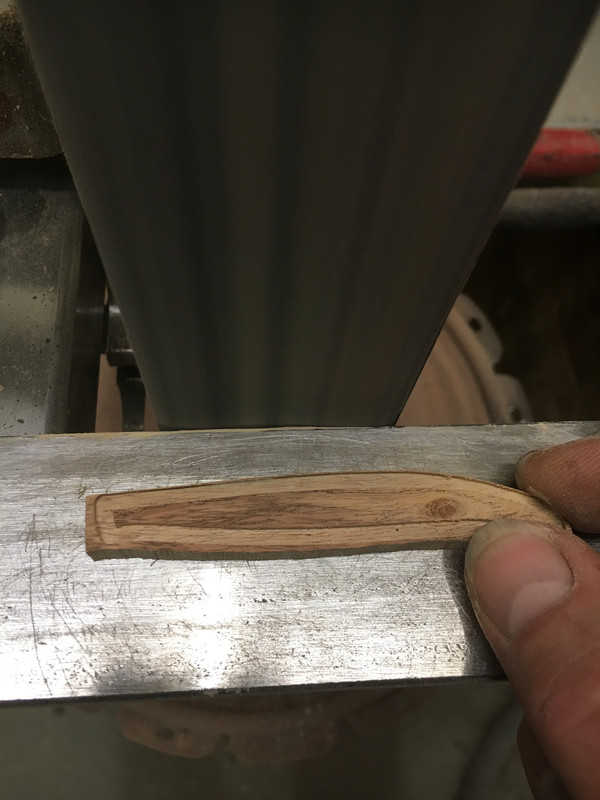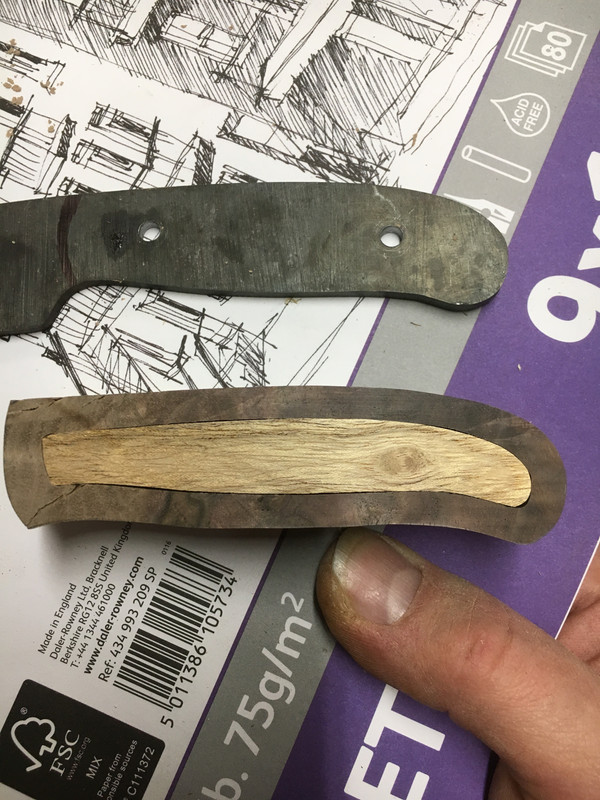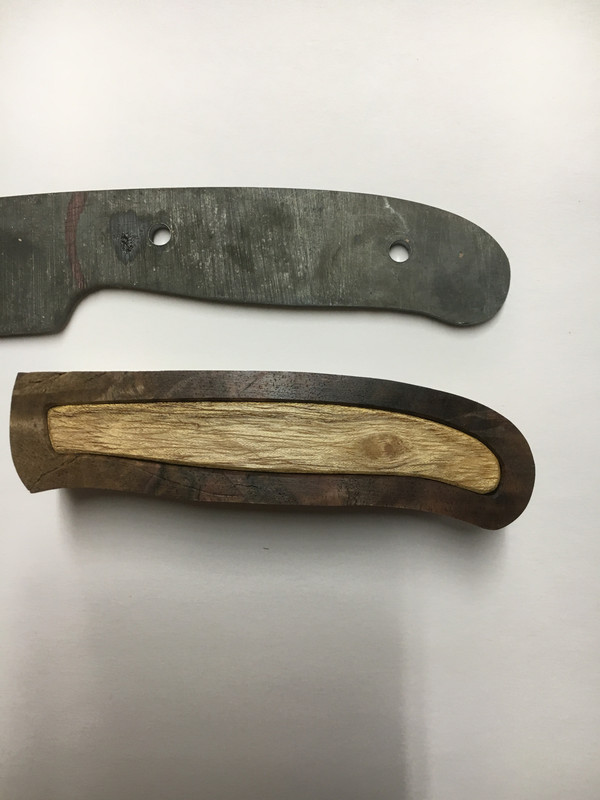Gene Kimmi
KNIFE MAKER
Back at it. Next I wanted to drill holes through the blade so epoxy will connect the inlays. I have a bunch of holes in the blade but they didn't line up with where I need them. I marked the blade where the holes need to be.
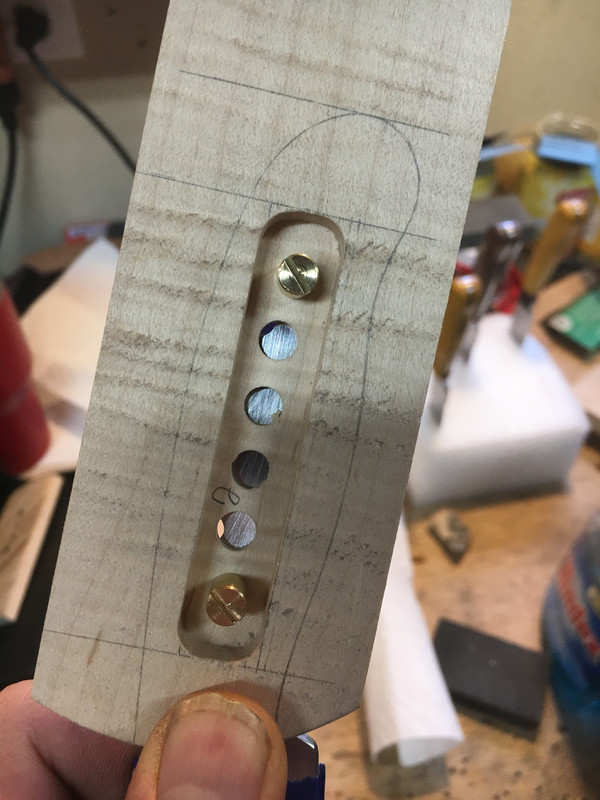
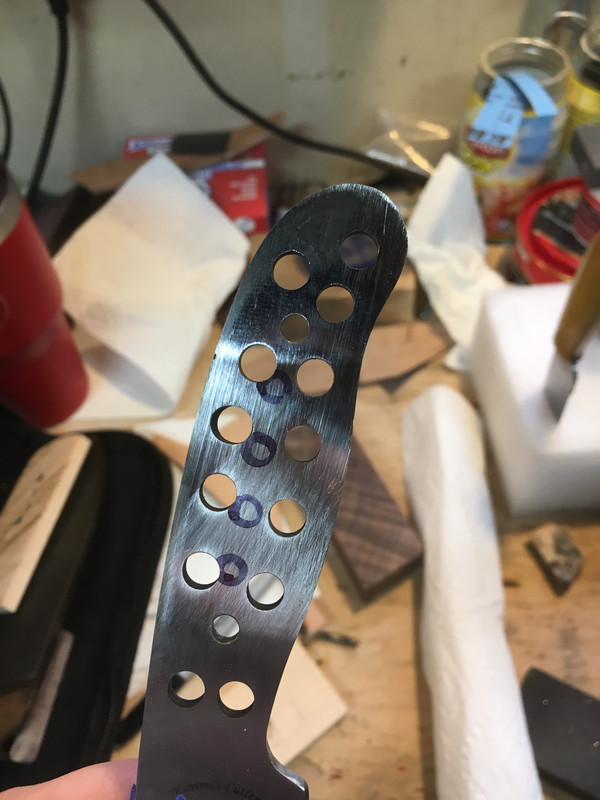
Unfortunately, the blade is too hard to drill. So I went to the alternative, the hot drill.
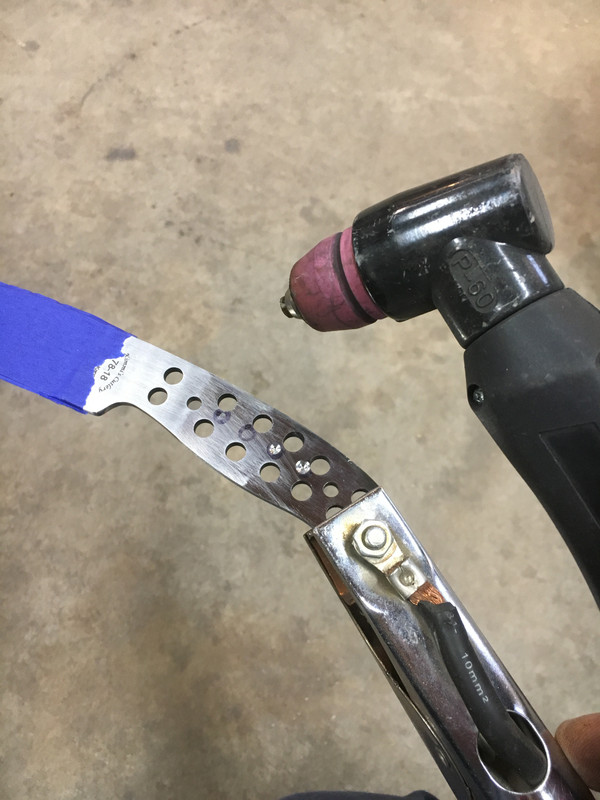
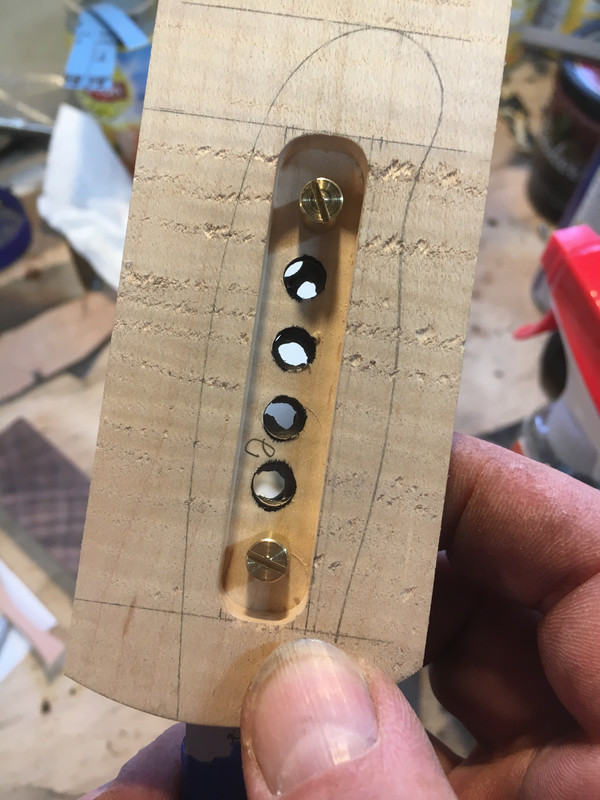
Flattening the back of the scales on the disc sander was next, followed by countersinking for the corby bolts.
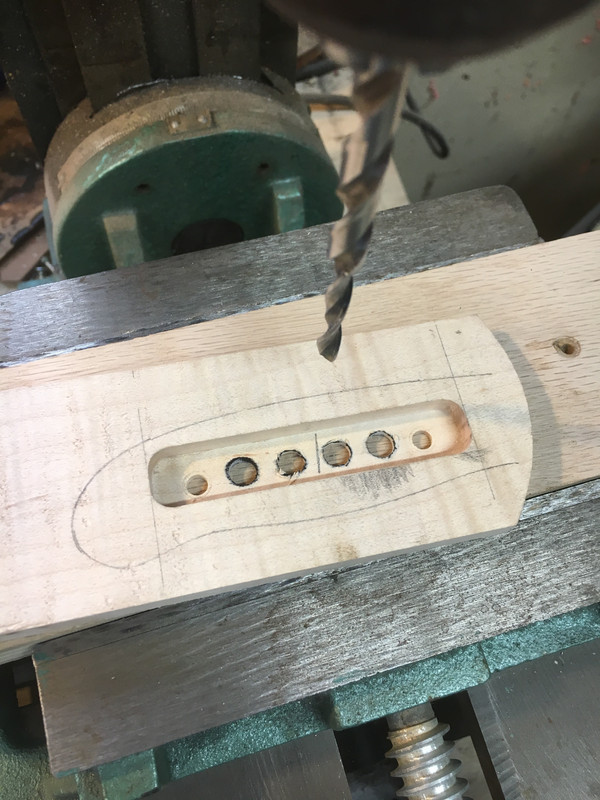
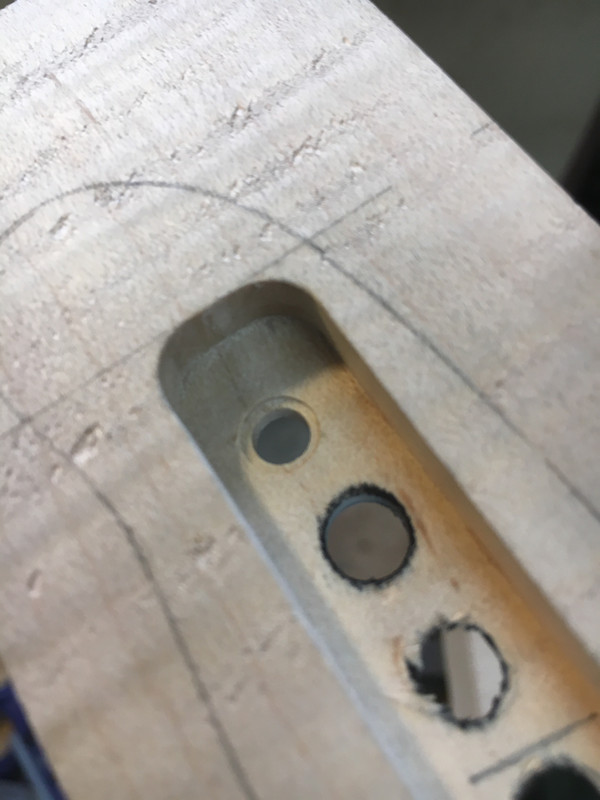
As I posted earlier, the thickness of the scales under the inlay is fairly thin. Too thin for the colby bolts to work as they are.
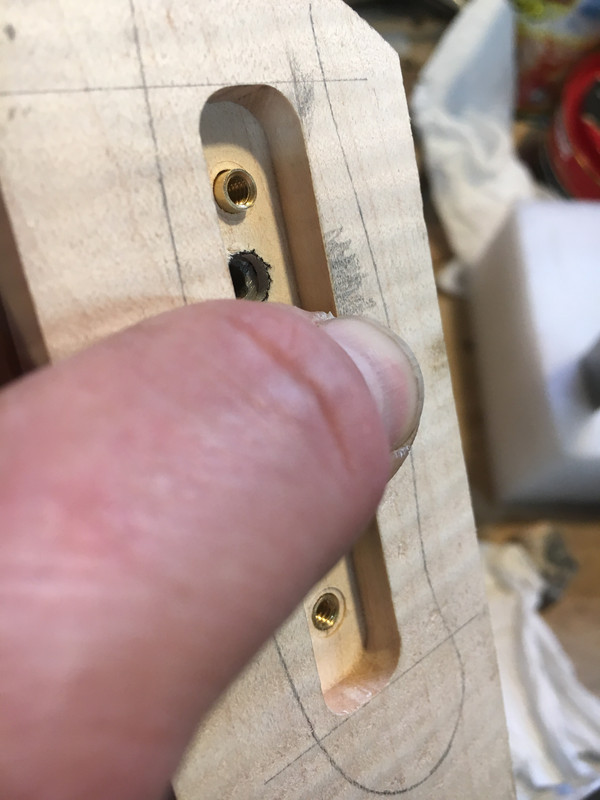
I ground them down on the disc sander to fit. I left just enough for them to reach into the 2nd scale.
Here they are with a non shortened one. Don't mind the one to the side, we're going to call it an experimental one.
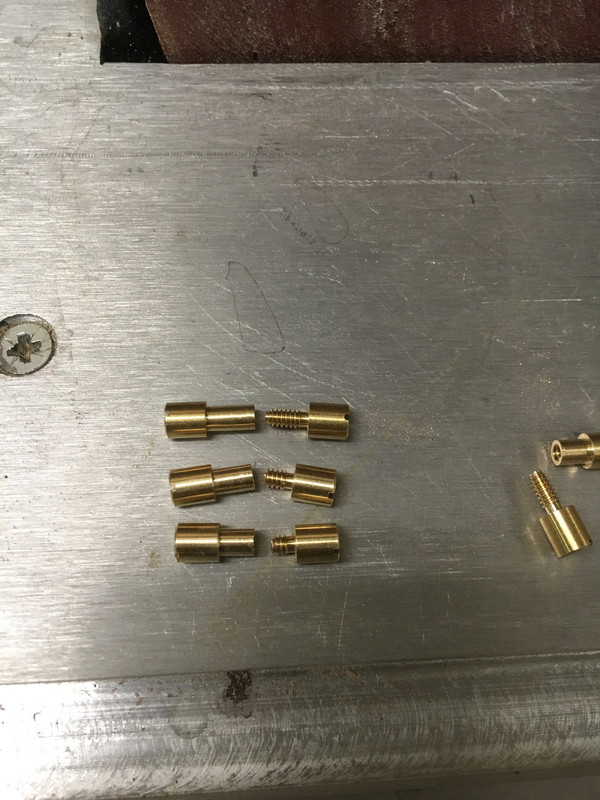
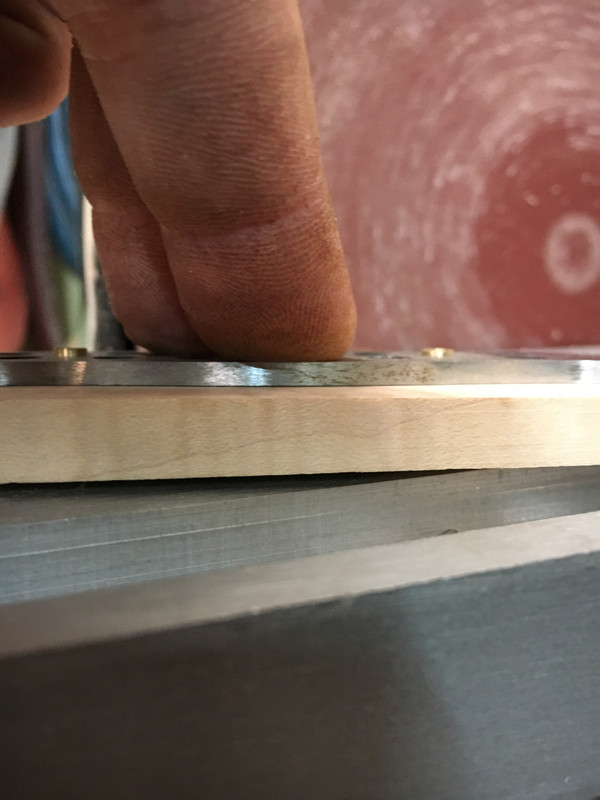
Next I milled the head of the corbys down so they will be recessed inside the inlay.

I then used a small burr on a rotary tool to cut a slot so I could remove the corbys.
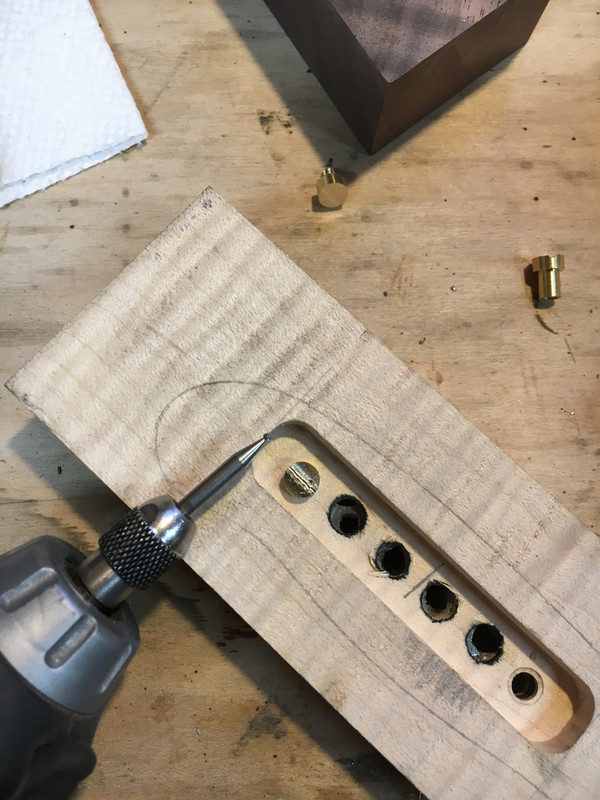
This let me remove them, but I wanted a better slot to be able to tighten them up when I epoxy the scales on. I drilled a hole in a shim and put the corby bolt on it.
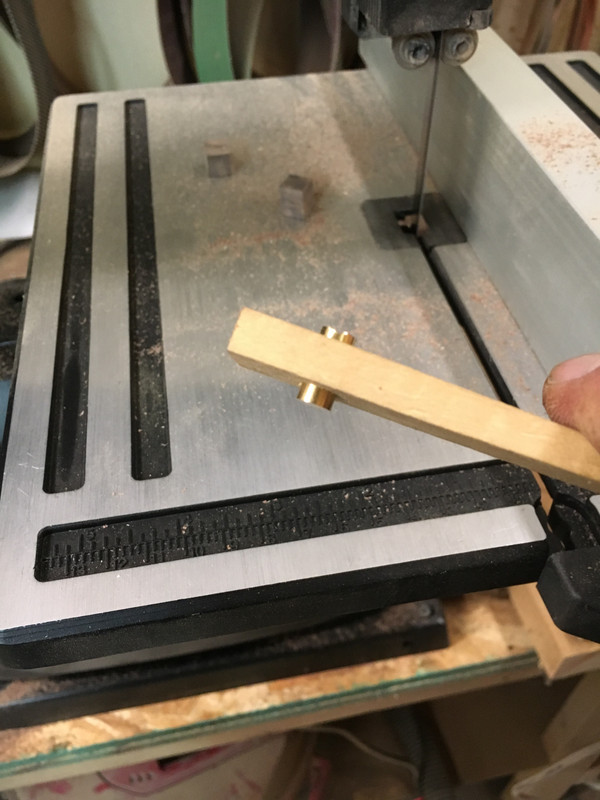
Using a long pair of needle nose pliers to help hold it, I cut a slot in the corby on the band saw.
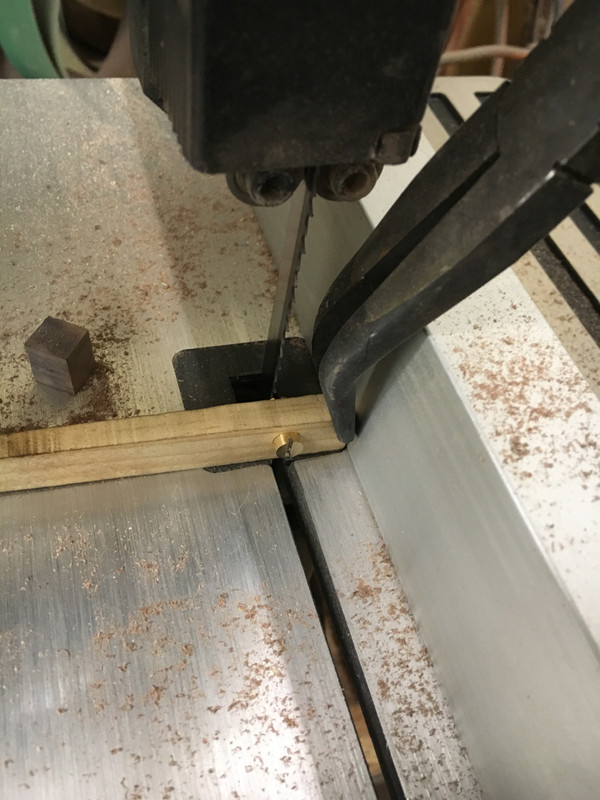
This worked better that I expected.
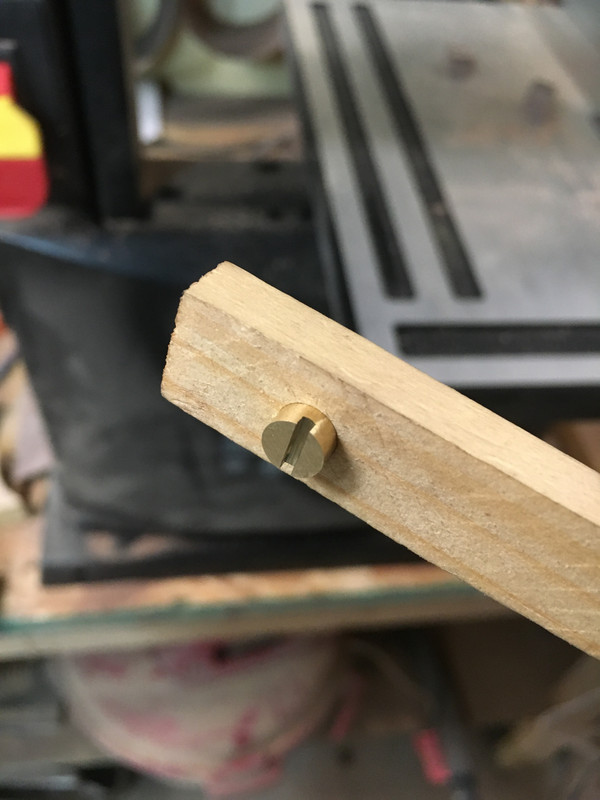
Next, I'll work on the inlays. Should have more to add later tonight.


Unfortunately, the blade is too hard to drill. So I went to the alternative, the hot drill.


Flattening the back of the scales on the disc sander was next, followed by countersinking for the corby bolts.


As I posted earlier, the thickness of the scales under the inlay is fairly thin. Too thin for the colby bolts to work as they are.

I ground them down on the disc sander to fit. I left just enough for them to reach into the 2nd scale.
Here they are with a non shortened one. Don't mind the one to the side, we're going to call it an experimental one.


Next I milled the head of the corbys down so they will be recessed inside the inlay.

I then used a small burr on a rotary tool to cut a slot so I could remove the corbys.

This let me remove them, but I wanted a better slot to be able to tighten them up when I epoxy the scales on. I drilled a hole in a shim and put the corby bolt on it.

Using a long pair of needle nose pliers to help hold it, I cut a slot in the corby on the band saw.

This worked better that I expected.

Next, I'll work on the inlays. Should have more to add later tonight.
Last edited:

